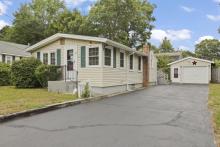Town House fixes, bike path approved at Town Meeting
MARION — Town Meeting voters spent time on the second night, May 14, debating how they should use Community Preservation Committee (CPC) funds before approving fixes to the outside of the Town House and a bike path along Creek Road and Jenna Drive.
Both projects come from funds that have already been set aside from a three percent charge on taxes and would not incur further taxes.
The land for the bike path project was set aside 20 years ago and the project came before the Selectmen in 2018 but was rejected for lack of information.
Chris Welch asked why Community Preservation Committee funds could not be used on the $2 million school renovation project that had passed earlier in the meeting.
CPC administrator Jeff Doubrava responded that the funds cannot be used on building structures or installing lighting. The fund could have been used for some of the project, which proposed putting LED lights on the field and auditorium, but not all of it. Doubrava was also hesitant to tie up CPC funds for the project’s fifteen year funding life cycle.
Town residents asked about connectivity and maintenance on the bike path. Some would have preferred more connectivity to Route 6, and worried about who would maintain the 8 foot wide gravel path if constructed.
The Department of Public Works and a senior work project would maintain the project.
Proponents brought up the safety issue for dogs, walkers, bikers, joggers and children who feel unsafe on the winding roads in that area.
A second article that generated comments was a proposal to use $787,500 in Community Preservation Funds and $12,500 in Historic Preservation Funds to repair the exterior of the Town House.
The project was whittled down from a $1.3 million ask to an $800,000 ask. Debbie Macomber expressed concern that even $800,000 would be a lot to ask of a fund responsible for a lot of things. Another Marion resident urged the town to not pass up any state or federal funds for the project.
Andrew Daniel asked whether starting construction on the building would trigger codes that would require sprinklers or handicap access, costing more than anticipated.
Doubrava responded that he would work carefully with an architect to make sure that didn’t happen, and that the spending stayed on track.










